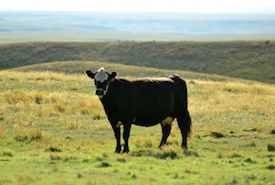Nature Conservancy of Canada: Canada’s Agriculture Day is a time to celebrate environmentally sustainable agriculture

On Canada’s Agriculture Day, I want to talk about environmentally sustainable agriculture. As a professional agrologist working for a conservation agency, my perspective on how the Nature Conservancy of Canada (NCC) operates often includes how we contribute to Canada’s food supply.
I grew up on a small grain farm just north of Saskatoon, Saskatchewan, and then went to school for a surprisingly long time to learn about soils, plants, microbes and how to manage them all. I got a job in British Columbia working for the Ministry of Forests, Lands and Natural Resource Operations. After eight years of adventures with ranchers, loggers and guide outfitters, I landed a job back in Saskatchewan for NCC.
Many of NCC’s Saskatchewan Region projects are within working landscapes. This means that we conserve biodiversity while providing opportunities for farmers and ranchers to make a living and produce high-quality food that is distributed around the world. These things can co-exist, but it takes planning and buy-in from the conservation community and the agriculture industry. While NCC focuses on the environment, we can’t ignore the economics of what we do, nor the communities in which we operate — just like the farmers who incorporate these into the decisions they make.
As unlikely as it seems to our neighbours, we are farmers, of sorts, too: we are farming biodiversity and we do it by balancing the needs of society, the economy and the environment in a working landscape.
There are many ways to farm biodiversity, and many farmers are working to do this. Wetlands retained on farmland provide habitat for waterfowl, help prevent flooding and can provide food for livestock. Carefully managed grazing provides sustainable and tasty protein, maintains grasslands birds like the American curlew and the Sprague’s pipit and contributes to Canada’s developing narrative of hard work and connection to the land.
The wild bees and bugs that require the native habitat we help conserve also help pollinate crops and gardens. When farmers retain those patches of prairies or avoid bulldozing or clearing the shrubs and trees in the “back forty,” they aren’t just keeping something that looks pretty; they are providing the ecosystem services we take for granted when we buy groceries.
Supporting farmers when they make the seemingly expensive decision to include habitat on their farms should be part of the cost of buying food. And these efforts need to be part of the conversation on Canada’s Agriculture Day. Every day, farmers and ranchers around the world make decisions that balance the needs of society, the environment and the economy. Those decisions keep us fed, but they come at a cost. Depending on who you talk to, the decisions are weighted more toward either society, the economy or the environment than the other, but everyone — biodiversity farmers and food farmers alike — includes all three. It is time the Canadian public recognized that.


